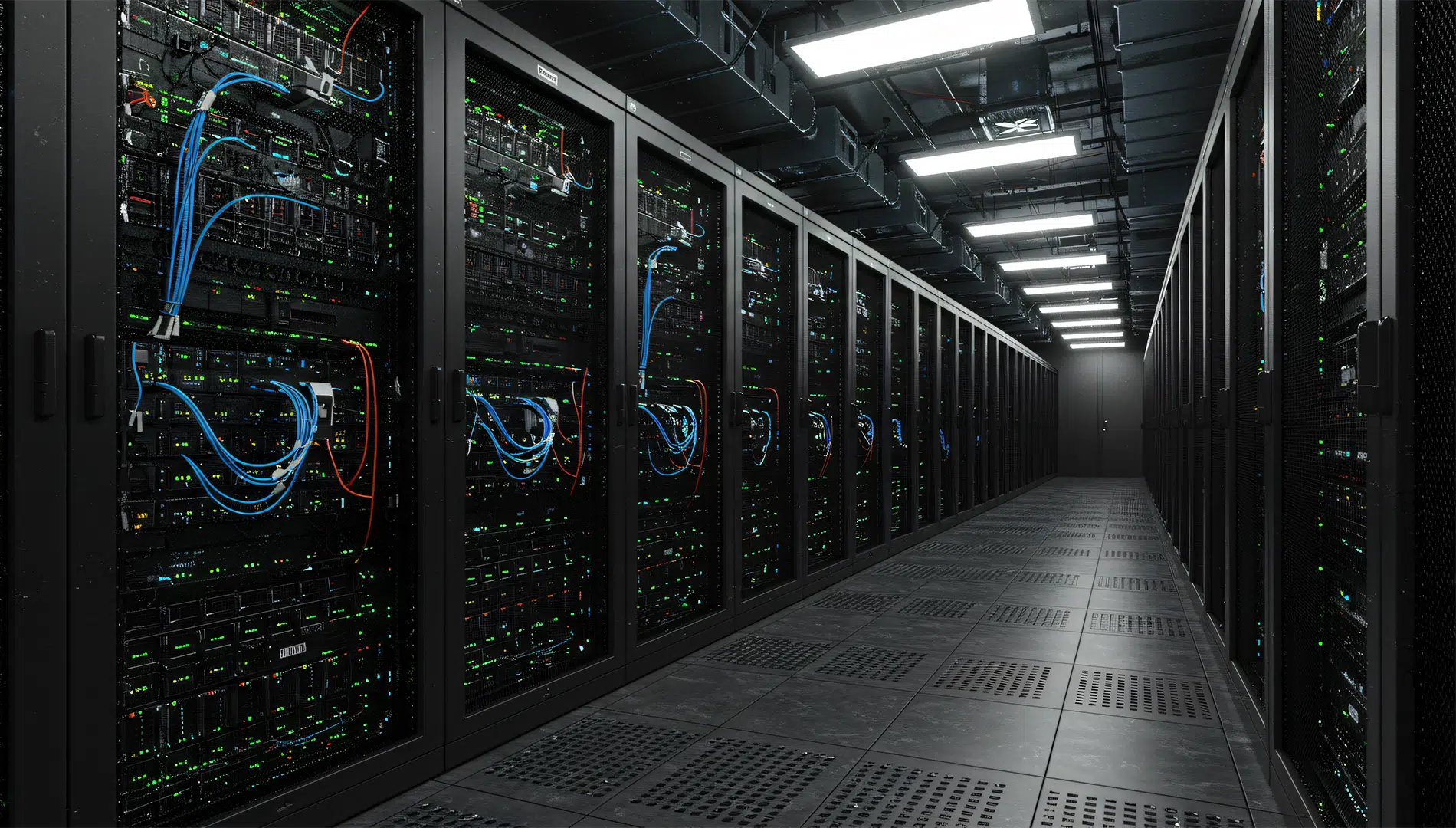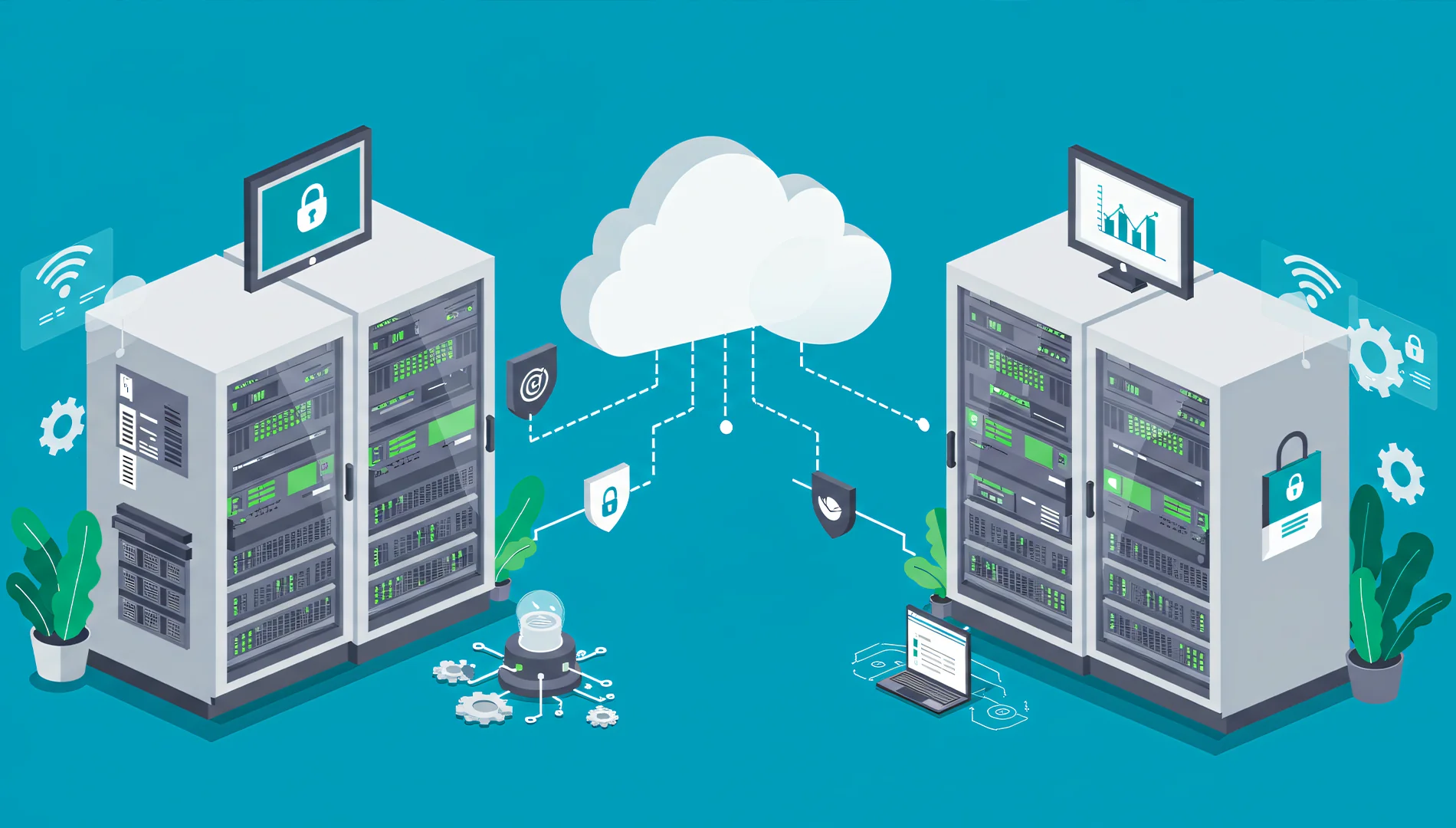Server based computing is an innovative approach to managing IT resources, where central servers handle computing tasks, data storage, and software management, rather than relying on individual devices like personal computers or mobile phones.
This model enhances business efficiency and offers substantial cost savings for organizations.
What is Server Based Computing?
Server-based computing, also known as server-centric computing, refers to a system architecture in which central servers manage the primary computing tasks.
These servers handle the processing of data, hosting software, and storage, all while delivering resources to multiple devices across a network. This method reduces the need for powerful individual devices for employees, allowing organizations to optimize IT infrastructure.
By relying on central servers instead of upgrading hardware for each user, businesses can manage IT resources more effectively. This approach not only simplifies management but also significantly cuts down on the need for expensive device upgrades.
Moreover, the cost savings from centralized infrastructure are particularly beneficial for small and medium-sized enterprises (SMEs), which often face tight IT budgets.
What is a Server in Computing?
A server in computing is a high-performance machine that delivers services, resources, or data to other computers or devices known as clients. In server-based computing, the server becomes the central hub for managing business IT operations.
It handles a wide variety of tasks, including hosting websites, managing databases, or running enterprise applications, which lightens the load on individual devices.
For businesses, servers enable seamless integration and efficient resource management, allowing them to house data and software in one location.
This centralization not only simplifies the management process but also enhances scalability, enabling the company to grow without significant IT infrastructure overhauls.

Example of a Server Computer
A web server serves as an excellent example of a server computer. This server hosts websites and provides access to users across the internet. Another example is a file server, which stores and manages files that can be accessed by multiple users within a network.
These servers differ from regular desktop computers in both hardware and software. Servers are specifically designed for continuous operation, handling multiple simultaneous requests and managing large volumes of data. This makes them crucial for businesses that depend on fast, reliable access to data and applications.
Server-Based vs. Cloud-Based Computing: Key Differences
While both server-based computing and cloud computing rely on servers, they differ significantly in terms of infrastructure and management:
- Server-Based Computing: Businesses own and manage their physical servers, either on-site or in data centers. This model offers greater control over security and data management, but it also requires significant investment in hardware and skilled IT staff.
- Cloud-Based Computing: This model involves renting computing resources from third-party service providers like Amazon Web Services (AWS) or Microsoft Azure. It offers more flexibility, as businesses can scale resources up or down, but it often involves ongoing operational costs.
How Server-Based Computing Cuts Business IT Costs
Server-based computing has proven to be an effective way to reduce IT costs for businesses by centralizing resources and streamlining infrastructure management.
1. Cost Savings Through Centralized Infrastructure
By consolidating IT resources in a central server, businesses can significantly reduce hardware costs. Instead of purchasing high-end devices for each user, companies can opt for lower-cost devices such as thin clients or low-spec desktops.
This shift to a centralized infrastructure minimizes the need for individual software licenses, as software can be hosted on the server and shared across the network.
2. Reduced Hardware and Maintenance Costs
Server-based systems are designed for high-performance tasks and can run continuously without the frequent replacement that typical desktop computers require.
This reduces hardware and maintenance costs, as businesses only need to focus on maintaining and upgrading the server, not individual devices.
Additionally, IT staff can concentrate on managing a few powerful servers instead of troubleshooting hundreds or thousands of devices. This results in lower operational costs and greater efficiency in IT management.
3. Enhanced Security and Data Management
Centralizing data management with server-based systems enhances security. Rather than relying on the security of individual devices, businesses can implement robust data encryption, backup systems, and security protocols directly on the server, ensuring consistent protection for all users connected to the network.
For example, data breaches and loss of critical data can be mitigated by hosting backup solutions and security measures on a central server, reducing vulnerabilities associated with individual devices.
4. Scalability and Flexibility
Server-based computing systems allow businesses to scale their infrastructure easily. As a company grows, it can expand its server capacity to accommodate increased demand without needing to upgrade individual devices.
This scalability ensures that businesses can adapt to changing needs while maintaining a cost-effective IT solution.

Key Benefits of Server-Based Computing for Businesses
- Cost Reduction: Centralization of IT resources lowers both hardware and software costs.
- Efficiency: Simplified management of fewer devices leads to streamlined operations.
- Security: Enhanced data security through centralized protocols.
- Scalability: Businesses can easily scale their IT resources as needed.
Drawbacks of Server-Based Computing
While server-based computing offers many benefits, it does have some challenges:
- Initial Setup Costs: The upfront costs for purchasing and setting up servers can be significant. However, businesses can offset these costs by saving on hardware and software over time.
- Maintenance Requirements: Organizations must ensure that they have skilled IT staff to maintain and manage the server infrastructure effectively.
- Risk of Downtime: If a central server experiences downtime, it affects all users connected to it. To mitigate this, businesses should have redundant systems and disaster recovery plans in place.
What is a Server Job? Understanding the Role of Servers in Computing Operations
A Server Job refers to the specific tasks or functions performed by a server within a computing system. These jobs are crucial to ensuring that IT operations run smoothly and efficiently, particularly in server-based computing environments.
For businesses, understanding the role of a server job can greatly improve IT infrastructure management and optimization.Key Server Jobs
Servers handle various functions that are essential for the smooth operation of business IT systems. The main server jobs include:
Data Storage and Management
Servers are responsible for securely storing business-critical data and ensuring it’s accessible across the network. This centralization simplifies data backup and recovery processes, reducing potential downtime risks and loss of critical information.
Application Hosting
Servers host various business applications that users access remotely, making it easier for employees to collaborate without the need for powerful individual devices. This ensures efficiency and consistency in software use across the organization.
Network Security Management
Server jobs also involve implementing security measures, such as firewalls and antivirus protocols, to protect the network from unauthorized access and potential threats. By centralizing security at the server level, businesses can enhance data protection and mitigate risks associated with individual devices.
Why Server Jobs Matter for Businesses
Understanding server jobs is critical because these functions directly impact business performance. Without the proper management of server tasks, businesses risk slower processes, potential data breaches, and costly downtime.
Streamlining IT Operations
By leveraging well-optimized server systems, companies can reduce IT overhead costs, streamline processes, and focus on scaling operations. A well-executed server job allows businesses to maintain smooth operations while minimizing technical headaches.
Enhancing User Experience and Security
Investing in the right server infrastructure means businesses can offer a better user experience, increase productivity, and ensure their IT environment remains secure and adaptable.
Best Practices for Managing Server-Based Computing
When adopting server-based computing, businesses need to follow best practices to ensure seamless operation, security, and cost-effectiveness.
Server-based computing is a highly efficient model for managing IT resources, but it requires strategic planning, optimization, and ongoing maintenance.
By following these best practices, businesses can maximize the benefits of their server-based infrastructure while minimizing risks.1. Invest in Robust Server Hardware
The foundation of any successful server-based computing system is reliable, high-performance hardware.
Investing in high-quality servers is crucial to ensuring stability and performance. Additionally, robust hardware helps avoid potential disruptions that may otherwise affect your business operations.-
Redundancy: To prevent downtime, make sure your servers are equipped with backup power supplies, extra storage, and failover capabilities. This ensures uninterrupted service, thereby preventing disruptions in business operations.
-
Scalability: Choose server hardware that can easily scale with your growing business needs. As your business grows, a scalable server infrastructure will accommodate increased demand without necessitating costly and disruptive upgrades.
2. Optimize Server Configuration
Configuring servers to perform at peak efficiency is essential for the optimal functioning of your business.
When you configure your server-based infrastructure properly, it helps reduce bottlenecks and ensures smooth operations for all connected users.-
Server Load Balancing: Distribute workloads evenly across multiple servers to maintain smooth operation. Load balancing helps improve server performance and prevents system bottlenecks, which is critical for avoiding slowdowns.
-
Virtualization: Implement virtualization to run multiple operating systems and applications on a single physical server. Not only does this increase resource utilization, but it also reduces hardware requirements, ultimately lowering costs.
-
Regular Updates: Keep your servers updated with the latest software patches and security fixes. Regular updates close vulnerabilities, reduce the risk of attacks, and improve overall performance.
3. Centralize IT Resources
One of the key benefits of server-based computing is centralization. By centralizing your IT resources, businesses can streamline operations and significantly reduce costs. In addition, centralization makes it easier to manage and secure your IT infrastructure.
-
Data Storage: Store all critical business data on your central server. Implementing a solid backup strategy, including cloud backups, ensures redundancy and helps prevent data loss.
-
Software Management: Centralize software installations and updates. In a server-based computing environment, IT teams can manage installations from a single location, reducing the risk of inconsistencies or compatibility issues across multiple devices.
-
Access Control: Use role-based access control (RBAC) to regulate who can access specific resources. This approach enhances security, ensuring that only authorized personnel have access to sensitive data and systems.
4. Focus on Security and Compliance
Security is a priority when managing server-based computing systems. Since all data and software are stored on central servers, protecting these assets from potential threats becomes crucial. Fortunately, implementing best practices in security ensures your infrastructure remains safe and reliable.
Maximize efficiency and security with server-based computing. Implement robust hardware, optimized server configurations, and top-tier security practices to streamline IT operations. -
Firewalls and Intrusion Detection Systems (IDS): Implement firewalls and intrusion detection systems to safeguard your servers. These systems monitor and block unauthorized access, ensuring the integrity of your data.
-
Data Encryption: Encrypt sensitive data both at rest and in transit. This ensures that, even if a breach occurs, your information remains unreadable to unauthorized individuals.
-
Compliance: Ensure your infrastructure adheres to relevant industry regulations such as GDPR, HIPAA, and PCI DSS. Following these compliance standards not only protects your business but also boosts your reputation with customers and partners.
5. Monitor Server Performance Continuously
To maintain the health and performance of your server-based computing system, continuous monitoring is essential.
Regular performance checks help identify potential problems before they impact your operations, ensuring long-term stability and reliability.-
Track Resource Usage: Monitor CPU usage, memory consumption, storage, and network traffic to ensure your servers are running optimally. If resources are near capacity, you can take proactive measures to expand your infrastructure as needed.
-
Alert Systems: Set up automatic alerts to notify IT staff about potential issues, such as high resource usage, network congestion, or security threats. Early detection can prevent minor problems from escalating into major disruptions.
-
Capacity Planning: Use historical performance data to predict future resource needs. By planning ahead, businesses can prevent slowdowns and ensure their systems can handle future demands without unexpected upgrades.
6. Implement Disaster Recovery Plans
Even with the best practices in place, unexpected disruptions can still occur. That’s why having a solid disaster recovery plan is essential for minimizing downtime and ensuring business continuity.
-
Regular Backups: Ensure that all critical data is backed up regularly. Store backups in both local and off-site locations to minimize the risk of data loss in case of hardware failure or disaster.
-
Failover Systems: Set up failover systems that automatically take over in the event of a server failure. This ensures that your business continues operating even during unexpected incidents.
-
Test Recovery Procedures: Periodically test your disaster recovery plan to ensure its effectiveness. Simulated recovery tests help identify any weaknesses and allow for quick adjustments before an actual disaster occurs.
Conclusion
Effectively managing server-based computing is crucial for maximizing IT infrastructure efficiency and reducing costs.
By investing in reliable hardware, optimizing server configurations, centralizing resources, focusing on security, and implementing robust disaster recovery plans, businesses can maintain smooth operations and avoid potential pitfalls.These best practices not only streamline processes but also foster a secure, scalable, and cost-effective IT environment.
As businesses grow, the ability to scale up server-based computing infrastructure quickly and efficiently becomes critical to maintaining a competitive advantage. For companies looking to future-proof their IT operations, server-based computing offers a powerful solution. -
Frequently Asked Questions (FAQ)
1. What are the advantages of server-based computing?
Server-based computing centralizes IT resources, which reduces hardware costs, improves security, and provides easier management. It also offers better scalability and cost efficiency.
2. How does server-based computing differ from cloud computing?
Server-based computing requires businesses to own and manage their physical servers, while cloud computing relies on third-party providers. Server-based computing offers greater control, while cloud computing offers more flexibility.
3. Is server-based computing secure?
Yes, server-based computing can be highly secure when businesses implement appropriate security measures like data encryption and backup protocols.
4. What is the main challenge of implementing server-based computing?
The main challenge is the initial cost of setting up the infrastructure, though businesses can achieve long-term savings through reduced hardware and software costs.
Final Thoughts: Embrace Server-Based Computing for IT Efficiency
In conclusion, server-based computing offers businesses a powerful way to streamline IT operations, reduce costs, and improve data management.
By centralizing resources, organizations can optimize their infrastructure, lower operational costs, and create a more secure environment for their data.
If you’re looking to enhance your business’s IT efficiency, adopting server-based computing is an excellent strategy. Consider how this approach can transform your company’s IT infrastructure and boost your bottom line in the long term.
External Links for Further Reading:
- Learn more about server-based computing and its benefits at TechTarget.
- Understand the differences between cloud computing and server-based systems on IBM’s Cloud Blog.
- For real-time updates, subscribe to our newsletter and visit our Business and Technology sections.




